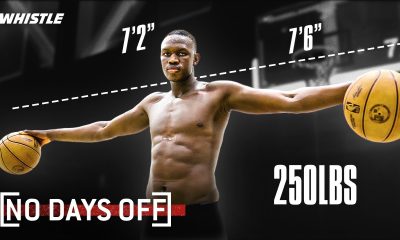NIL
Why Communicators Should Pay Attention to AI and Creative Rights Litigation


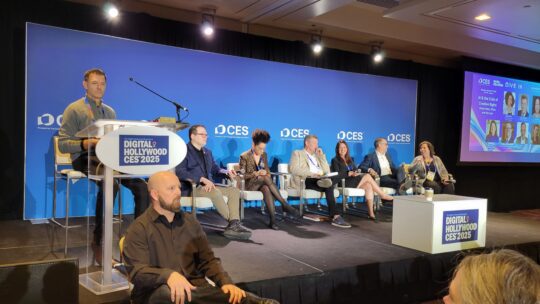 Panel experts with backgrounds in law, government affairs, public policy and creative representation emphasized AI’s dual role as a powerful tool for enhancing creativity. But they also noted the potential threat to human authorship and consent, particularly in generative AI’s replication of voices and images.
Panel experts with backgrounds in law, government affairs, public policy and creative representation emphasized AI’s dual role as a powerful tool for enhancing creativity. But they also noted the potential threat to human authorship and consent, particularly in generative AI’s replication of voices and images.
“AI has always been a tool that artists can use, but it can’t be allowed to replace artists and their work,” said Dr. Moiya McTier, Senior Advisor for the Human Artistry Campaign, which advocates for ethical AI practices and supports anyone who uses creativity in their work, including teachers’ unions, athletes, artists, photographers and more.
AI: Tool vs. Threat
“Currently, the copyright office takes a narrow view of human authorship,” Oratz said. “And the copyright office will not grant protection if something is purely AI-generated.”
Every panelist stressed the importance of watching upcoming trials and legislation regarding generative AI and fair use. According to Chad Hummel, Principal, McKool Smith, there are currently over 40 cases in litigation, many focusing on fair use and copyright law. These will be exceptionally important for creators and social media platforms, many of which use stock photography, music, animations and gifs created by others to be shared in posts.
Paul Lekas, SVP, Global Public Policy, Software & Information Industry Association (SIIA), believes that while we won’t see a federal consensus on any act regarding copyright or fair use and AI, we will see the lower courts, such as in the states, drawing the lines.
Duncan Crabtree-Ireland, National Executive Director SAG-AFTRA, offered up a personal harrowing experience: seeing his own deep fake as he helped to negotiate the end of the writers’ and actors’ strike in 2023, where one of the negotiation points involved the proliferation of AI and NIL.
Hummel said anyone in media or creative industries should keep a close eye on the Reuters and New York Times cases, in particular.
At CES 2025, the panel “AI and the Crisis of Creative Rights: Deepfakes, Ethics, and the Law” tackled the intersection of AI tech, intellectual property and ethics—something which the PR industry and communicators, particularly those working with content and content creators, should pay close attention to.
Litigation, AI and Copyright
“I work with companies that create content that is expensive to put together—academics, licensed paywall content, etc., Lekas said. “There are concerns about valuable data being used [to train] AI tools. It’s hard to find middle ground. Licensing is one area that makes sense to balance the two sides, but it doesn’t get to the real issues of NIL in the creative community.”
Given that copyright plays a large role in the future of AI, its definition and legislation on a common level is necessary. With language learning models (LLMs) like ChatGPT and OpenAI being trained on existing internet content, two issues emerge for creators. The first step, Oratz explained, is training models and the law deciding if it is a fair use or licensing issue. The other issue, she noted, is output—what the genAI provides the user with. Does the output also infringe on copyright? Who is responsible? The platform or the user?
“A lot of my creative clients, who are really embracing the use of AI, are constantly telling me how much it has really [helped] their creativity issues as a tool, even simple things like just making iterations easier,” she said. “You can [also] make content faster, easier and more affordable. You can do things to reduce barriers to entry and democratize content and smaller companies can more effectively compete with larger studios.”
Lisa Oratz, Senior Counsel, Perkins Coie, noted that even though there’s been negative stories surrounding digital replicas, there’s also some beneficial uses for AI.
“If someone makes a deep fake of you, or someone creates a digital replica of your likeness and puts it out there, there’s now recourse [with the law],” McTier noted.
“I don’t think any of us should want to see a culture that’s based on algorithmic output,” Crabtree-Ireland said. “There is something unique and special about… human culture that needs to come from the creative spark of humanity.”
Nicole Schuman is Managing Editor at PRNEWS.
The group has also been working on a federal level on the “No Fakes Act,” which will protect name, image and likeness of individuals from computer generated recreations from AI and other technologies, including deep fakes.
“I’m sure eyes roll when you hear litigation,” Hummel said. “But these are all business issues that will define the economics for the industry for the next several decades. Anyone in media, entertainment, tech: this matters to you—not just lawyers.”
Artificial intelligence continues to be of interest to nearly every industry, with applications including personalized shopping suggestions on social media platforms to office productivity programs with AI assistants. Its widespread adoption shows the technology has only begun to impact our everyday lives. However, its evolution will need to address some concerns—and quickly.
NIL
BCS Formula adds to the Final College Football Playoff Rankings controversy

The 2025 college football season is over and the College Football Playoffs are officially set to begin. And not without significant controversy after a 10-2 Notre Dame team was left out.
But what might the playoff look like if the committee wasn’t involved and it was left up to a less subjective system, like the BCS? Well, the fine folks at BCSKnowHow.com have clued us in on exactly what that would look like.
On3 stops to compile BCSKnowHow’s top 25, breaking it down into the hypothetical matchups it would create. Let’s dive into it below.
Indiana’s win in the Big Ten Championship Game was enough to cinch the No. 1 seed in both reality and in the BCS simulation. The Hoosiers are clearly the top team in the country and as such have earned a bye in the playoff.
Few teams are firing on all cylinders the way Indiana is right now, and the Hoosiers are pretty battle-tested after knocking off the next two best teams in the league. There’s a whole lot of excitement around the program right now, and rightly so.
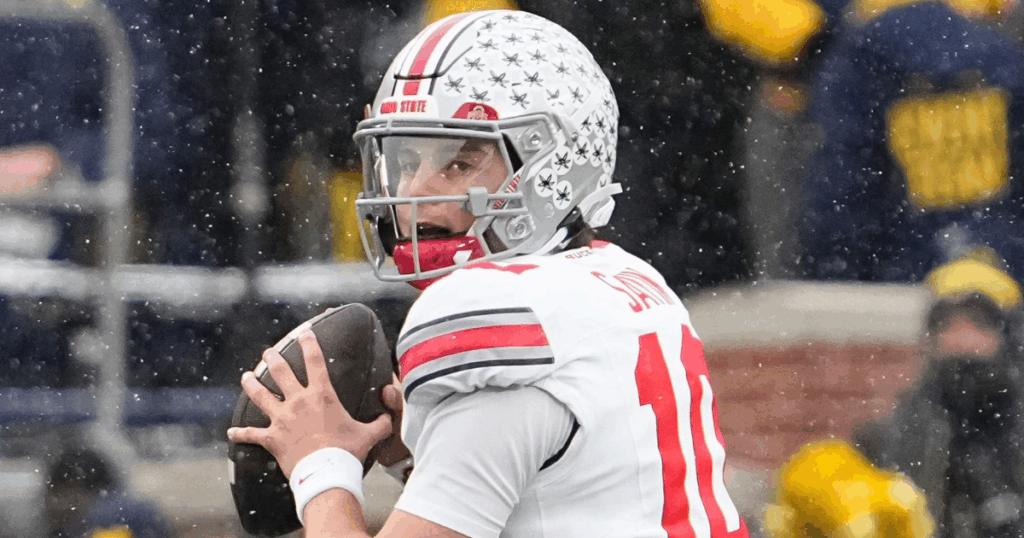
The simulated BCS continues to match up with the actual College Football Playoff rankings, keeping Ohio State up at No. 2 despite the loss on Saturday in the Big Ten title game. It was a close loss that could have cut either way, and it certainly won’t be a deterrent for the Buckeyes.
Now the question becomes how quickly Ohio State can turn the page on that loss? Will it linger or will the Buckeyes march on with a unified front and a clear goal? Something tells us Ryan Day will have his squad ready.
The Georgia defense kept Alabama off-balance all day long in the SEC Championship Game, paving the way for a blowout win. The offense did what it needed to apply pressure, and it eventually caused the Crimson Tide to cave.
Though the Bulldogs end up with the No. 3 seed, they’ll still have a nice path in the playoffs that begins with a first-round bye. That’s important in getting everyone healthy and ready to roll for the College Football Playoff run.
Texas Tech, like in the College Football Playoff rankings, takes the No. 4 spot in the BCS simulation. That keeps the Red Raiders in position to earn a first-round bye and avoid playing right away.
The Red Raiders might be playing as well defensively as any team in the country, even after impressive showings by Ohio State and Indiana on Saturday. Can that power Texas Tech to a deep playoff run?

The first team to check in outside the top four, Oregon earns a first-round home game by virtue of checking in at No. 5. It also gets the lowest-ranked conference champion by virtue of doing so, and this matchup is the same as the actual CFP.
Oregon probably hasn’t quite played its best football just yet, but getting a home game to start a playoff run can potentially kick things into gear. Say this: Nobody’s exactly going to be lining up wanting to face the Ducks.
The second SEC team in the field in both the College Football Playoff rankings and the simulated BCS, Ole Miss earns a first-round home game in the playoffs. Oxford should be downright insane.
Throw in the fact that the Rebels now have a new coach for the playoffs and the intrigue for this one is off the charts. The rankings do, however, include a rematch for Ole Miss. More on that below.
Again, the CFP continues to track perfectly with the BCS simulation through the first seven teams. That’s been the case each of the first two years in the playoff; the committee is often not much different than the BCS.
Kyle Field gets tapped to host a playoff game, and in this edition the opponent actually does change. Alabama checks in as the No. 10 team and thus the opponent for Texas A&M in the first round.

Still the same as the College Football Playoff rankings, and Oklahoma gets to host a home playoff game as a result. The Sooners have certainly earned it after compiling some excellent wins, including a win over Alabama.
The weather is even shaping up such that we could have a potential snow game in Norman in two weeks. That would certainly be something for two powerhouse teams vying for a national title, ultimately.
The first drastic change the BCS simulation produces against the College Football Playoff rankings is the inclusion of Notre Dame in the field at No. 9. Because Alabama slipped behind Notre Dame, there was a buffer with Miami.
That’s ultimately what did the Fighting Irish in when the real field was unveiled on Sunday. Alabama did not slide, leaving Notre Dame vulnerable to the head-to-head result with Miami and out of the field. Not so in the BCS.
Alabama checks in only one spot lower than the actual CFP in the simulated BCS, falling to No. 10 overall. That puts it as the last team to make the field as an at-large.
The Crimson Tide have a lot of work to do to prove they’re worthy of the bid after falling to the Bulldogs in blowout fashion on Saturday evening. Can Alabama regroup and put up a fight on the road at Texas A&M?
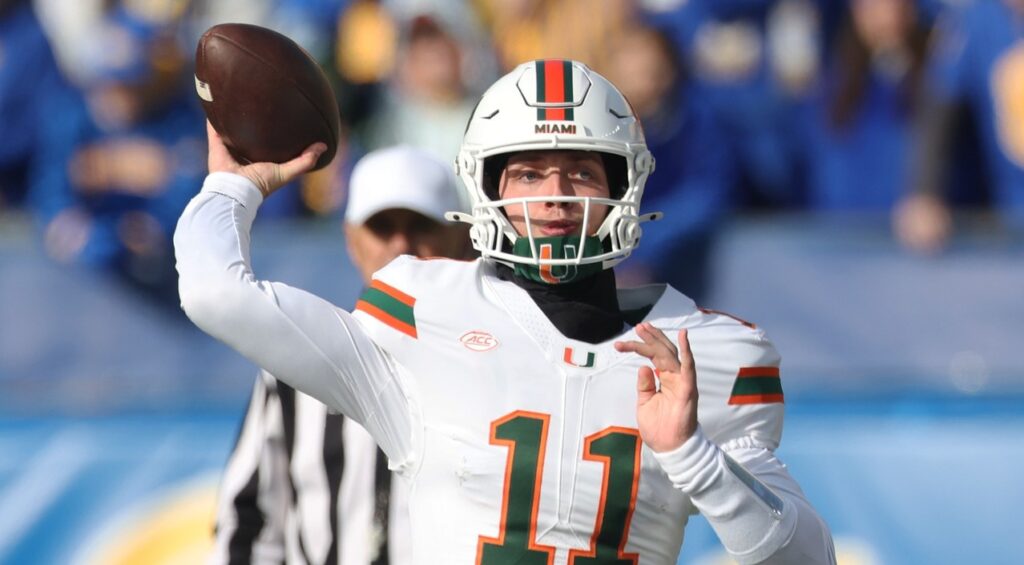
Miami doesn’t get the benefit of sidling up next to Notre Dame in the rankings in the BCS simulation. Thus, the Hurricanes end up left out of the field in this edition of the would-be playoffs.
Ultimately, Miami had a strong season but the loss to Louisville would prove costly in this scenario. Luckily for Hurricanes fans, this is just an exercise. In reality, Miami is readying for a first-round playoff game at Texas A&M.
BYU falls to the same spot in the simulated BCS rankings as the College Football Playoff, which is to say outside of the playoff field. Even with a closer game in the Big 12 Championship Game it’s not clear that BYU would have had enough juice to make the field.
Overall it was a strong season for the Cougars, but they were blown out both times by the Red Raiders. Wins over Utah and Arizona were reasonably impressive, though.
Rest of the CFP Top 25: 13-25
- Vanderbilt Commodores
- Texas Longhorns
- Utah Utes
- USC Trojans
- Michigan Wolverines
- Tulane Green Wave
- James Madison Dukes
- Arizona Wildcats
- Virginia Cavaliers
- Navy Midshipmen
- North Texas Mean Green
- Iowa Hawkeyes
- Georgia Tech Yellow Jackets
First-Round Byes
- Indiana Hoosiers
- Ohio State Buckeyes
- Georgia Bulldogs
- Texas Tech Red Raiders
5. Oregon Ducks vs. 12. James Madison Dukes
Oregon will get to play host to James Madison in this matchup that mirrors the actual College Football Playoff selections. It’s hard to see James Madison coming away with a win in that tough an environment, but that’s why they play the games.
6. Ole Miss Rebels vs. 11. Tulane Green Wave
Another true-to-life matchup, Ole Miss will be set to host Tulane in the first round of the playoffs. The two teams have already met once this year, with the Rebels winning in an absolute blowout in Oxford. Can the Green Wave tighten the margin a bit? Maybe even make it competitive?
7. Texas A&M Aggies vs. 10. Alabama Crimson Tide
In previous years this would have consistuted a rematch, but Alabama and Texas A&M did not face each other this year or last year. Still, it’s a game in which both programs — if not the coaches — will be plenty familiar with each other. That could make for a fun game.
8. Oklahoma Sooners vs. 9. Notre Dame Fighting Irish
In the final first-round playoff game, Oklahoma plays host to Notre Dame, which makes the field over Miami in the simulated version of the BCS. This has all the makings of a classic, particularly depending on how the weather shakes out.
NIL
UGA suing former Bulldog, Missouri DE for transfer damages
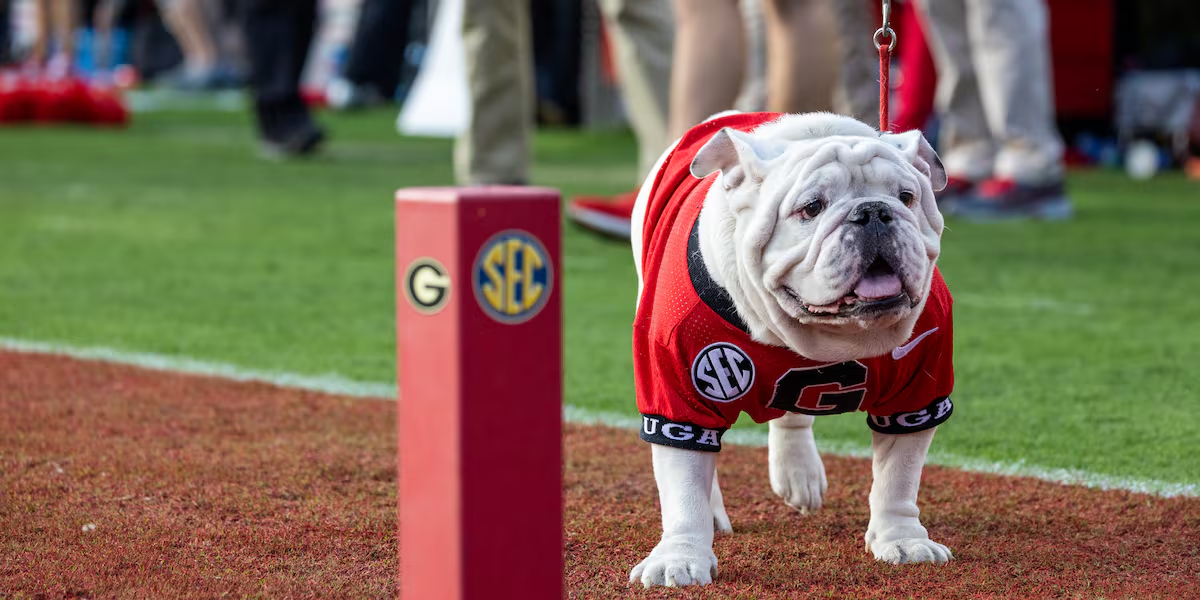
ATLANTA, Ga. (Atlanta News First) — A University of Missouri defensive end is now at the center of what could become a landmark legal battle in college football.
The University of Georgia has filed a lawsuit against former Bulldog Damon Wilson, seeking nearly $400,000 in damages after the player transferred schools.
Wilson, who spent his first two seasons at Georgia, signed a new NIL agreement with the school in December of last year. However, shortly after finalizing the deal, he entered the transfer portal and committed to Missouri about a month later.
According to court documents, Georgia paid Wilson $30,000 of what was structured as a $500,000 NIL contract before his departure. The university argues that because Wilson left before fulfilling the terms of the agreement, he now owes the school a $390,000 lump-sum repayment.
The case highlights the growing tension and legal complexity surrounding NIL contracts and player mobility, and could set a precedent for how schools and athletes navigate similar agreements in the future.
This is a developing story. Check back with Atlanta News First for updates.
Copyright 2025 WANF. All rights reserved.
NIL
IU football is No. 1 seed in College Football Playoff, headed to the Rose Bowl – The Daily Hoosier

Indiana football is three wins from a national title, and they’ve earned the most favorable path to get there.
After a perfect 13-0 season and Big Ten title, IU is the No. 1 overall seed in the 2025 College Football Playoff. The Hoosiers are also the No. 1 team for the first time ever in the new AP Poll released Sunday afternoon.
The CFP bracket was revealed live on ESPN Sunday afternoon and can be seen below.
In the Rose Bowl, Indiana will face the winner of No. 8 Oklahoma and No. 9 Alabama. The Rose Bowl kicks off at 4 p.m. ET on Jan. 1 (ESPN).
If the Hoosiers advance to the national semifinals, that game will be the Peach Bowl in Atlanta on Jan. 9. Texas Tech, Oregon and James Madison are the possible opponents in that game.
Three teams from the Big Ten were in the national top-5, as Ohio State (No. 2) and Oregon (No. 5) were also included in the CFP.
FINAL CFP BRACKET
FINAL CFP RANKINGS
| RANK | TEAM | OVERALL RECORD |
|---|---|---|
| 1 | Indiana | 13-0 |
| 2 | Ohio State | 12-1 |
| 3 | Georgia | 12-1 |
| 4 | Texas Tech | 12-1 |
| 5 | Oregon | 11-1 |
| 6 | Ole Miss | 11-1 |
| 7 | Texas A&M | 11-1 |
| 8 | Oklahoma | 10-2 |
| 9 | Alabama | 10-3 |
| 10 | Miami | 10-2 |
| 11 | Notre Dame | 10-2 |
| 12 | BYU | 11-2 |
| 13 | Texas | 9-3 |
| 14 | Vanderbilt | 10-2 |
| 15 | Utah | 10-2 |
| 16 | Southern California | 9-3 |
| 17 | Arizona | 9-3 |
| 18 | Michigan | 9-3 |
| 19 | Virginia | 10-3 |
| 20 | Tulane | 11-2 |
| 21 | Houston | 9-3 |
| 22 | Georgia Tech | 9-3 |
| 23 | Iowa | 8-4 |
| 24 | James Madison | 12-1 |
| 25 | North Texas | 11-2 |
For complete coverage of IU football, GO HERE.
The Daily Hoosier –“Where Indiana fans assemble when they’re not at Assembly”
Related
NIL
Miami Selected to College Football Playoff – University of Miami Athletics

CORAL GABLES, Fla. — The Miami Hurricanes football program was selected Sunday to the 2025 College Football Playoff, receiving an at-large bid to secure the team’s first-ever trip to the CFP.
The Hurricanes are seeded tenth in the CFP field and will travel to College Station, Texas, to face seventh-seeded Texas A&M on Saturday, Dec. 20, at noon ET on ABC.
“We are excited to be making our first appearance in the College Football Playoff,” Vice President/Director of Athletics Dan Radakovich said. “Congratulations to Mario Cristobal, our coaching staff and our student-athletes on a terrific regular season that was justly rewarded by the CFP Committee. We look forward to facing Texas A&M in the opening round and I know Miami fans will make their presence felt in College Station.”
Miami (10-2) closed the regular season as one of the most complete teams in the country, ranking second in the ACC in scoring offense at 34.1 points per game while leading the league in scoring defense at just 13.8 points allowed per contest. The Hurricanes also led the ACC in total defense, surrendering only 277.8 yards per game.
On offense, Miami averaged 425.8 yards per game. The Hurricanes posted 5,110 total yards with 50 total touchdowns across 12 games, including 27 passing touchdowns and 23 rushing scores.
Through the air, Miami led the ACC in passing efficiency at 165.47 while completing 73.88 percent of its throws for 3,310 yards. Defensively, Miami held opponents to just 86.8 rushing yards per game, the best mark in the ACC, while allowing only 190.9 passing yards per contest.
To stay up to date with the University of Miami football team, be sure to follow @canesfootball on Instagram, X and Facebook.
NIL
Forget Kiffin — NIL is the real villain here

I am not an Ole Miss fan… Hail State. So, when Lane Kiffin left for LSU, “ne’er a tear fell.” Most likely, the same could have been said about our Egg Bowl rivals when Dan Mullen left MSU to go coach at Florida in 2017, leaving the Dawgs without a head coach for the TaxSlayer Bowl.
It’s just something about having a winning season that gets our Mississippi coaches snapped up for bigger and better things.
As history has shown us, however, these grandiose positions don’t always pan out. But as luck would have it for these men, the money keeps rolling in thanks to lucrative contracts that payout even when you’re fired.
Life is just not fair!
I guess some of you may be curious as to why I am even bringing up this topic. It’s not like I am any kind of football fanatic or guru.
Sure, I enjoy watching a game now and again, particularly when Mississippi State is having a winning season — I guess you can deduce that it’s not been too often these days — but what little enjoyment I have had in the past is certainly waning. And it seems this Kiffin contract is becoming the nail in the coffin.
NIL
John Calipari Said What? Must-Hear Quote About NIL Era Goes Viral After Arkansas Video
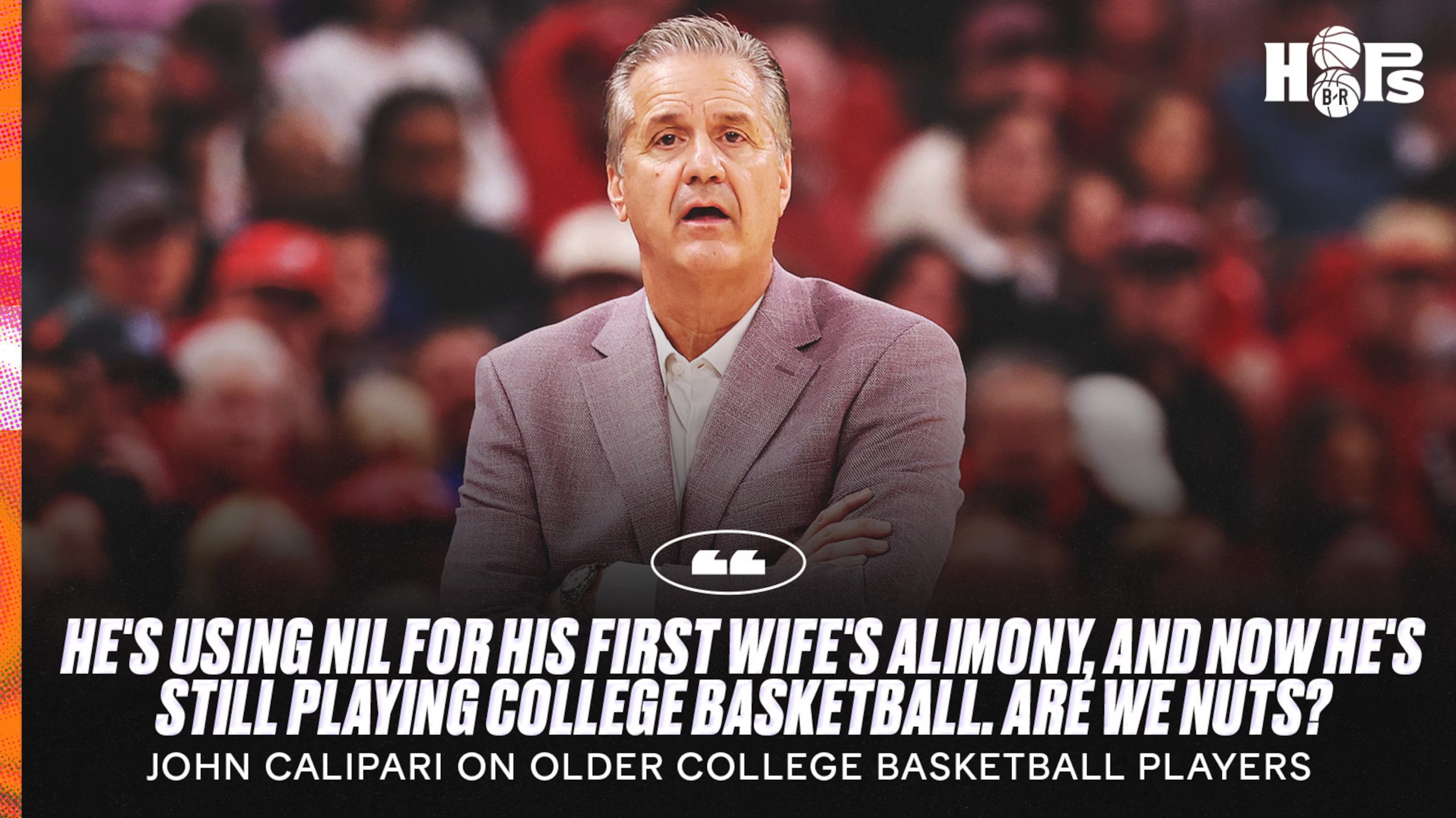
Arkansas men’s basketball coach John Calipari expressed a desire for the NCAA to adjust its eligibility rules when talking Saturday about aging rosters in the era of NIL and revenue sharing.
Calipari was asked Saturday what he thought about recent upsets including Gonzaga’s Friday blowout of Kentucky, Louisville’s Saturday upset of Indiana and Iowa State’s dominant Saturday win over Purdue.
“There are a lot of older gentlemen with beards playing basketball in college right now,” Calipari answered after the Razorbacks’ 82-58 Saturday win over Fresno State. “There are. So, the one that’s crazy, and the guy comes in, and he’s waving to his kids up in the seats. And you’re like, ‘Wait a minute. The guy’s got two kids. He’s still playing college basketball.’
“Crazy thing. He’s using NIL for his first wife’s alimony, and now he’s still playing college basketball. Are we nuts? So now you have these kinds of games, and these kind of scores.”
Calipari went on to estimate that the Razorbacks will be “one of the three youngest teams in the SEC” this season.
The head coach told reporters that creates mismatches with older teams both on mental and physical levels.
“Last year every team was old in our league. They were old,” Calipari said. “And so now, you’re going to have those kind of things. And you’re also going to have a team, like a Fresno, beat somebody because they’ve got all grad students, seniors, and their average age is 25, and your average age is 19 or 20.
“So, until we fix the eligibility thing, this is what it is.”
Average ages in men’s college basketball have been trending upward for the past decade.
The average age of starters in the Sweet 16 rose from 20.8 to 21.6 between 2019 and 2025, per Lev Akabas of Sportico.
Auburn’s starters had an average age of 23.2, which made the Tigers rotation older than the starting lineups of five NBA teams at the time, per Akabas.
That trend could become even more dramatic if the NCAA considers giving athletes an additional year of eligibility without a redshirt, which The Athletic’s Sam Khan Jr. and Ralph D. Russo reported in October some football and basketball coaches were expecting in the near future.
The NCAA answered with a memo in October stating that current eligibility rules giving athletes five years to play four seasons would remain in place at least through the 2026-27 academic year, per Khan and Russo.
-

 Rec Sports2 weeks ago
Rec Sports2 weeks agoFirst Tee Winter Registration is open
-

 Rec Sports2 weeks ago
Rec Sports2 weeks agoFargo girl, 13, dies after collapsing during school basketball game – Grand Forks Herald
-

 Motorsports2 weeks ago
Motorsports2 weeks agoCPG Brands Like Allegra Are Betting on F1 for the First Time
-
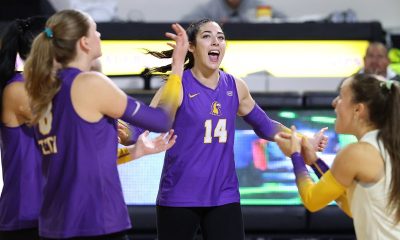
 Sports3 weeks ago
Sports3 weeks agoVolleyball Recaps – November 18
-

 Motorsports2 weeks ago
Motorsports2 weeks agoF1 Las Vegas: Verstappen win, Norris and Piastri DQ tighten 2025 title fight
-

 Sports2 weeks ago
Sports2 weeks agoTwo Pro Volleyball Leagues Serve Up Plans for Minnesota Teams
-

 Sports2 weeks ago
Sports2 weeks agoUtah State Announces 2025-26 Indoor Track & Field Schedule
-

 Sports2 weeks ago
Sports2 weeks agoSycamores unveil 2026 track and field schedule
-

 Motorsports1 week ago
Motorsports1 week agoRedemption Means First Pro Stock World Championship for Dallas Glenn
-

 NIL1 week ago
NIL1 week agoBowl Projections: ESPN predicts 12-team College Football Playoff bracket, full bowl slate after Week 14
















